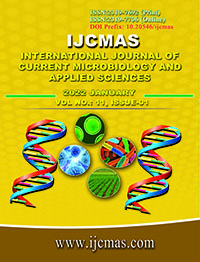


 National Academy of Agricultural Sciences (NAAS)
National Academy of Agricultural Sciences (NAAS)

|
PRINT ISSN : 2319-7692
Online ISSN : 2319-7706 Issues : 12 per year Publisher : Excellent Publishers Email : editorijcmas@gmail.com / submit@ijcmas.com Editor-in-chief: Dr.M.Prakash Index Copernicus ICV 2018: 95.39 NAAS RATING 2020: 5.38 |
Background: UTI is predominantly a disease of females as well as in the pediatric population. The incidence of UTI is 1% in boys and 3% in girls in first decade of life. Bacteria gets easily access to female urinary tract due to short female urethra, close proximity to vagina and poor sanitary habits. Early diagnosis and treatment is necessary to prevent rise in antibiotic resistance, morbidity and cost of treatment. Materials and Methods:- The aims of this study were to assess the common microorganisms causing UTI and their antimicrobial resistance patterns in patients attending tertiary level hospital of Western Rajasthan during six month study period (1 January 2021 to 30 June 2021) from the patients attending OPD & IPD in a Tertiary Maternal and Child care Hospital. Urine samples were received in microbiology laboratory and showing CFU>105 were further processed as per standard laboratory protocol. Result: Out of 1138 samples received, 450 showed significant growth. 166 (36.88%) Patients were in pediatric age group and 284 (63.11%) patients were adult female who visited Obstetrics and Gynecology department. 206 (45.77%) isolates were Gram negative bacilli (GNB), 194 (43.11%) isolates were Gram positive cocci and 50 (11.11%) isolates were Yeast. Escherechia coli 150 (33.33%) and Enterococcus species 146 (32.44%) were predominant uropathogens in this study. Most of GNB were resistant to Amoxiclave (67.47%), followed by Ceftazidime (66.50%), Ampicillin (59.60%), Most of the GPC were resistant to Cefazolin (52.08%) followed by Ofloxacin (44.32%). Maximum GPC were sensitive to Vancomycin (100%) and Linezolid (99.48%). Conclusion: Uropathogens were found highly resistant to commonly used antibiotics in UTI. Therefore periodic surveillance and monitoring of local antimicrobial profile and their antibiogram is necessary to update the treatment guidelines and to formulate antibiotic policy.
 |
 |
 |
 |
 |